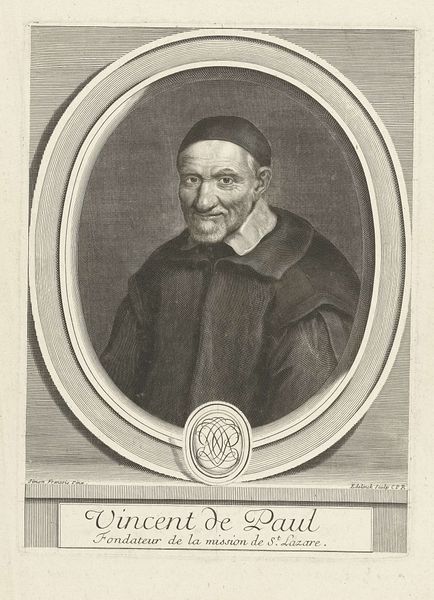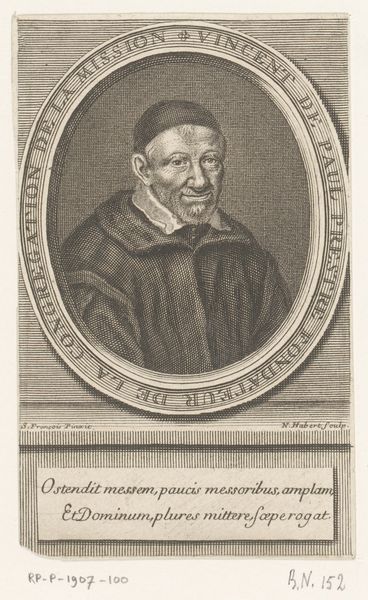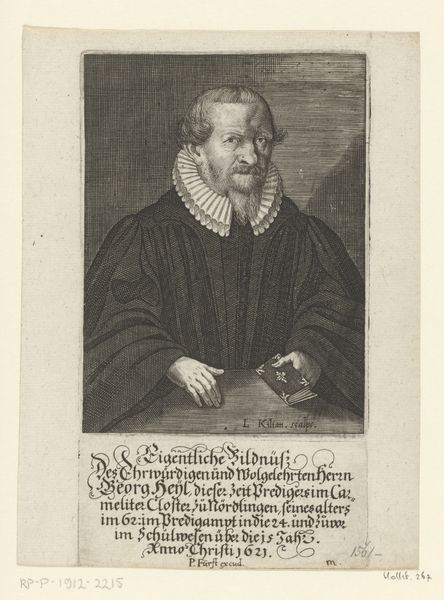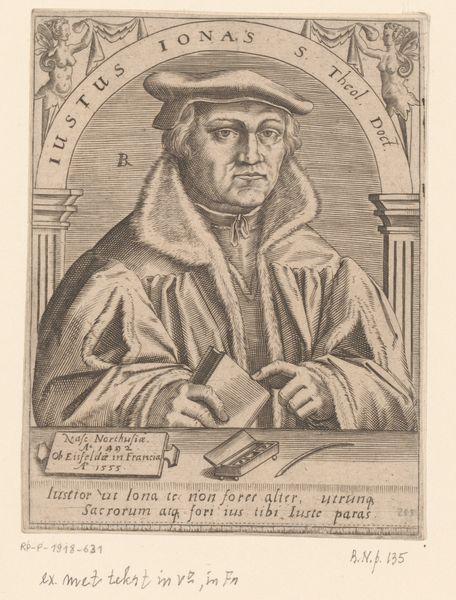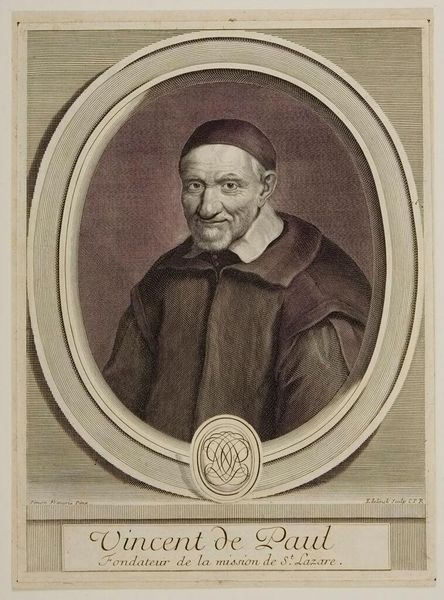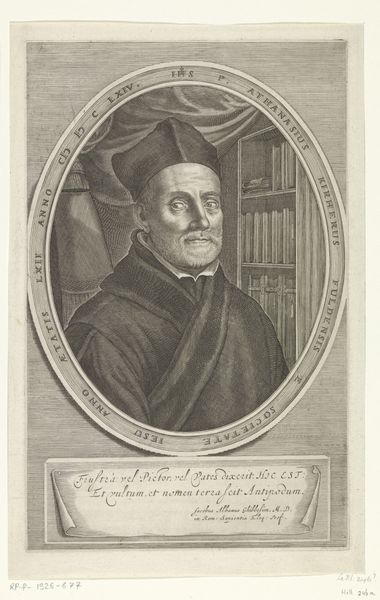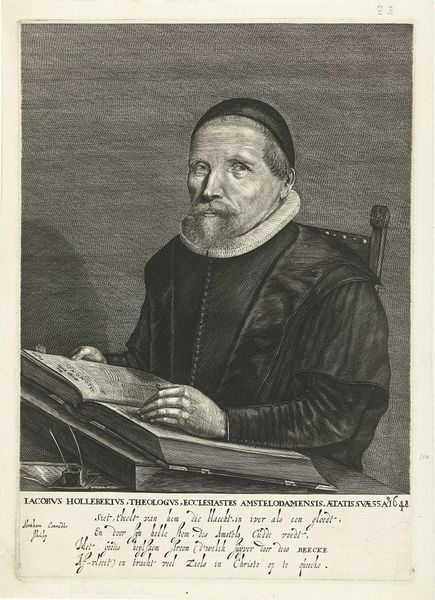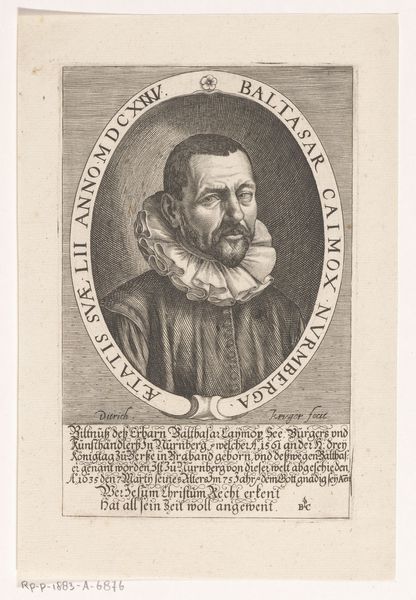
engraving
#
portrait
#
baroque
#
engraving
Dimensions: height 167 mm, width 116 mm
Copyright: Rijks Museum: Open Domain
Editor: So, this is "Portret van Vincentius a Paulo," an engraving made sometime between 1660 and 1701 by Pierre Landry. The detail in the face is remarkable, capturing what feels like deep thought. There's a lot going on in his expression. How do you interpret the visual language here? Curator: Consider the gaze: it engages the viewer directly, demanding a response. But notice too, the somberness conveyed not just through the aging face etched meticulously in the engraving, but also through the dark tones, almost as if veiling a deeper mystery. What cultural memories do you think this evokes for someone of that time? Editor: Maybe the gravitas expected of religious figures? He founded a religious congregation, right? So, perhaps a symbol of leadership and piety? Curator: Precisely! And it speaks volumes, doesn’t it, about how society visually codified its leaders, especially within the church. Observe the books lining the background – a deliberate insertion, don't you think, hinting at the subject's learned nature and placing him in a context of wisdom and religious study. Does the inclusion feel somewhat formulaic to you? Editor: I see what you mean. It almost feels staged, reinforcing those existing notions, but I suppose that’s partially the purpose of portraiture. Curator: Indeed. Portraiture becomes a cultural stage, reaffirming identity. We must recognize the image as a carrier, deliberately shaped to propagate certain societal ideals. So, how does our modern perspective shift our understanding of this image now? Editor: Thinking about it that way definitely broadens the conversation beyond just the surface level representation of a man. I initially saw the engraving as just a portrait, but it is charged with symbols and designed to promote established power structures. Curator: Exactly! Engaging with images as active participants in a continuous cultural dialogue opens our understanding beyond simple aesthetic appreciation. It helps decode an underlying belief system through visual tools and strategies.
Comments
No comments
Be the first to comment and join the conversation on the ultimate creative platform.
